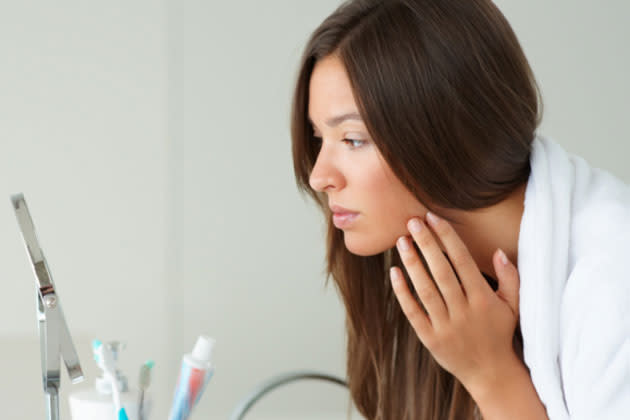Say Goodbye To Age Spots

Contrary to its name, "age spots"—those small brownish discolorations on the surface of the skin—are not caused by aging. The culprit of these irregular pigmentations on our complexion is overexposure to the sun. This doesn't happen overnight, though.
Our skin naturally has the ability to protect itself when subjected to the damaging effects of the sun, and this protection appears in the form of melanin—a pigment released by our skin cells—which gives our skin color. "As we age, this ability of our skin to protect itself begins to break down," explains dermatologist Denise Kim Buzon-San Juan, MD. This failure for the skin to safeguard itself results in the production of age spots.
Age has nothing to do with how soon age spots appear on your skin, but the amount of time you spend under the sun (as well as the melanin level your skin) does. Treatment for such discolorations vary—from topical forms like creams and serums, to more extensive approaches like laser treatments and microdermabrasion.
Creams
The cheapest and least aggressive, face creams, serums, and other topical formulas help lighten trouble spots. Look for products that have natural skin-lightening ingredients such as glycolic acid, retinols, vitamin C, licorice extracts, white birch, and soy. Note however, that such creams may lighten the entire surface of the skin, which means that while the age spots may get lighter, the rest of your face may get lighter, too. If you want to avoid this, a spot treatment (to be used on just the trouble area) can also be utilized.
Microdermabrasion
With intensity ranging from gentle at-home treatments to more intense dermatological procedures, this form of age spot removal refers to the exfoliation of the stratum corneum, or the very top layers of the skin. Some examples of microdermabrasion products/devices are creams that contain abrasive grains that are scrubbed on the skin; procedures that use crystals inside a suction device which basically sands down skin; and diamond-coated paddles that intensively polish the skin until it's clear and evenly-toned.
Ablative Laser Resurfacing
Classified as an aggressive form of laser treatment, Ablative Laser Resurfacing quite literally "carries away" the top layers of the skin to uncover a clearer, untarnished complexion. In this procedure, a topical numbing cream is rubbed on the skin beforehand, then the laser heats and removes the top layers of the tissue. The downside to this procedure is that your skin needs some down time in order for it to heal. Because it reaches the dermis (the layer below the epidermis), your skin may appear red at the start, after which scabs form. When the dry skin falls off, blemish-free skin is supposedly revealed.
Concealer
Sometimes age spots simply don't disappear or take longer to fade than you'd like. For instant albeit temporary results, use a concealer (make sure that this matches your skin tone perfectly) to cover up the area, then pat loose powder to keep the makeup from sliding off your face.
Whatever method you choose, know that age spots may reappear if you don't shield your skin from the sun. Wearing lotion or moisturizer with SPF is a must if you want to keep age spots from resurfacing, or from cropping up at all.
You may also like:
When to throw away tour makeup
Most overrated cosmetic procedures
Photoshopped to death celebrities
How to look sexy when you wake up
SLIDESHOW: 8 Beauty Secrets From Around the World

